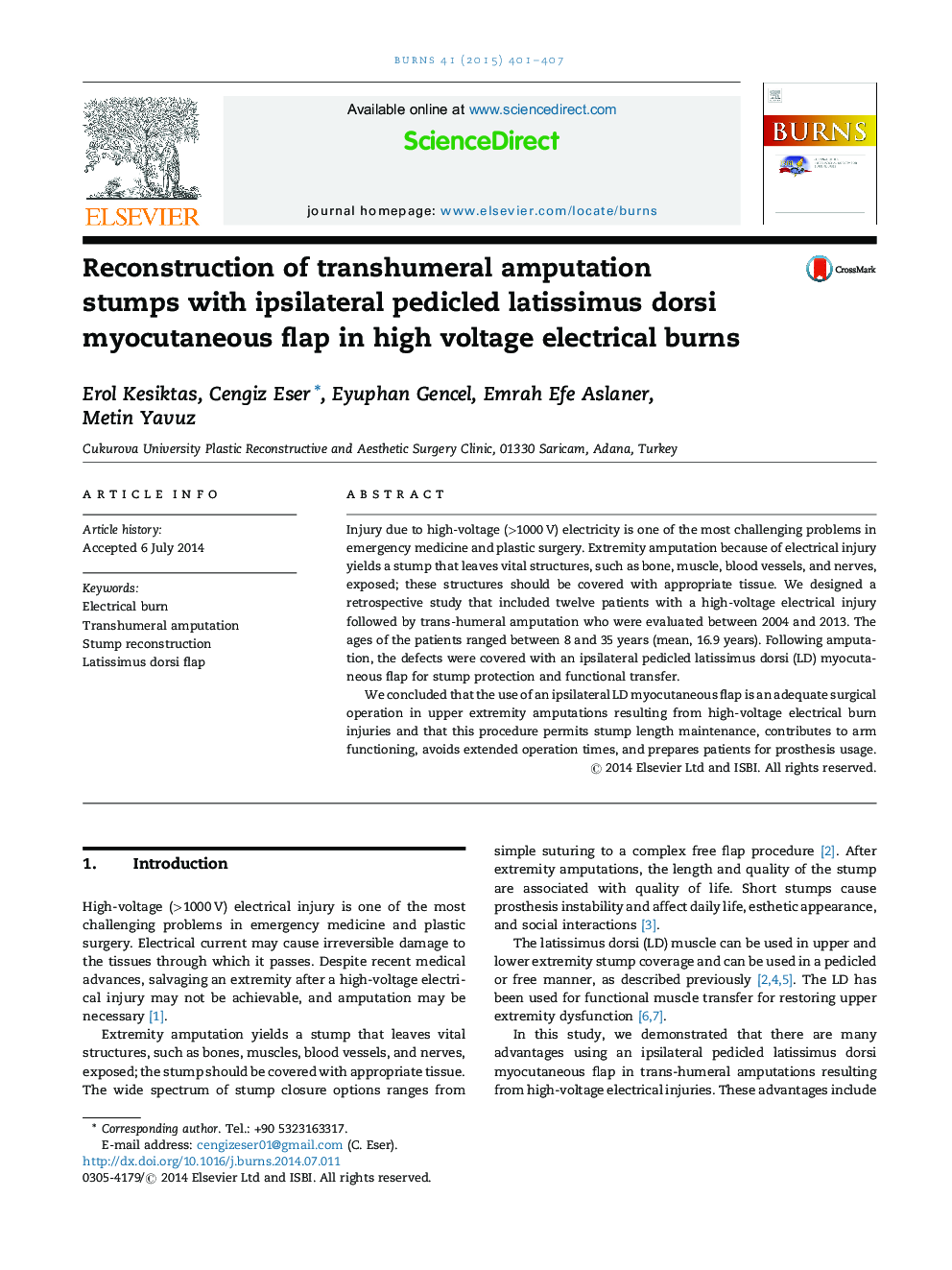| Article ID | Journal | Published Year | Pages | File Type |
|---|---|---|---|---|
| 3104459 | Burns | 2015 | 7 Pages |
•Protecting and lengthening transhumeral amputation stumps in a single operation.•Facilitating prosthesis adaptation after trans-humeral amputations.•Three-dimensional reconstruction of complex defects.•Functional reconstruction of amputation stumps.•A good alternative to free flap reconstruction.
Injury due to high-voltage (>1000 V) electricity is one of the most challenging problems in emergency medicine and plastic surgery. Extremity amputation because of electrical injury yields a stump that leaves vital structures, such as bone, muscle, blood vessels, and nerves, exposed; these structures should be covered with appropriate tissue. We designed a retrospective study that included twelve patients with a high-voltage electrical injury followed by trans-humeral amputation who were evaluated between 2004 and 2013. The ages of the patients ranged between 8 and 35 years (mean, 16.9 years). Following amputation, the defects were covered with an ipsilateral pedicled latissimus dorsi (LD) myocutaneous flap for stump protection and functional transfer.We concluded that the use of an ipsilateral LD myocutaneous flap is an adequate surgical operation in upper extremity amputations resulting from high-voltage electrical burn injuries and that this procedure permits stump length maintenance, contributes to arm functioning, avoids extended operation times, and prepares patients for prosthesis usage.
